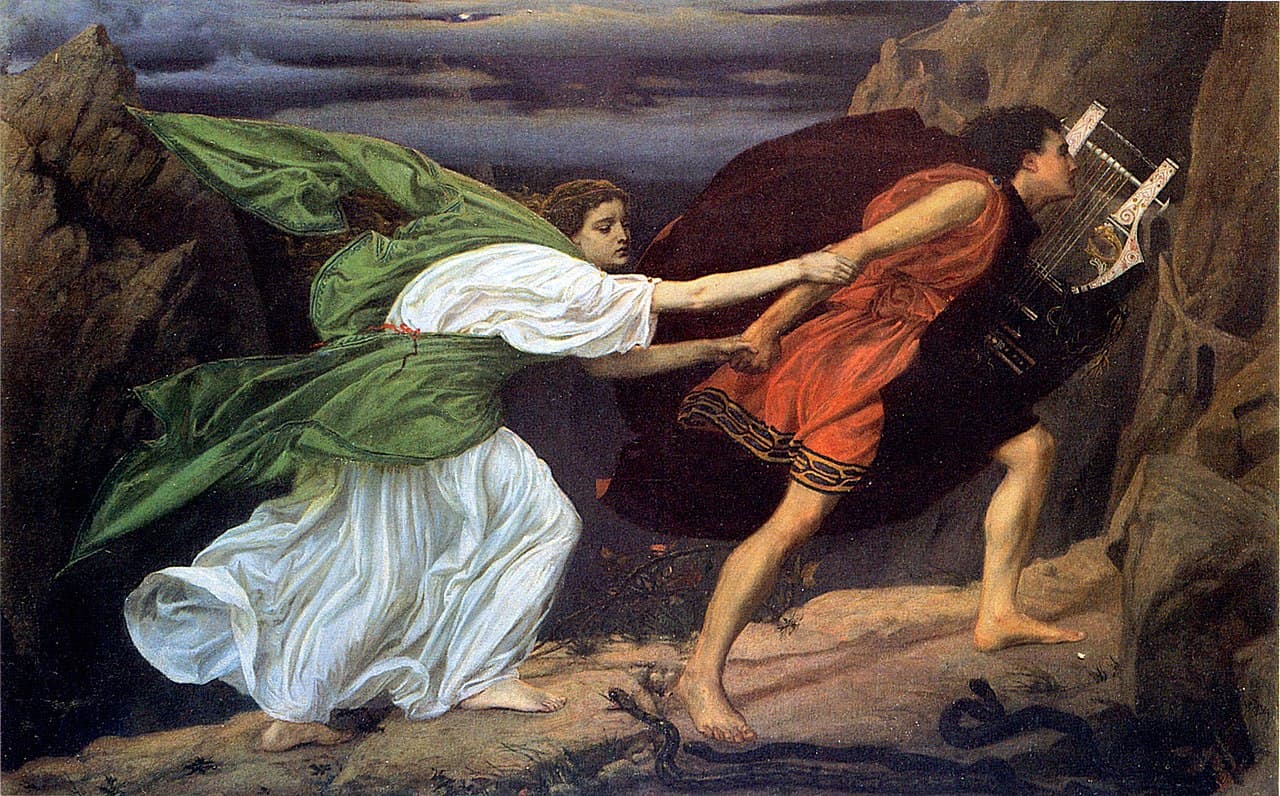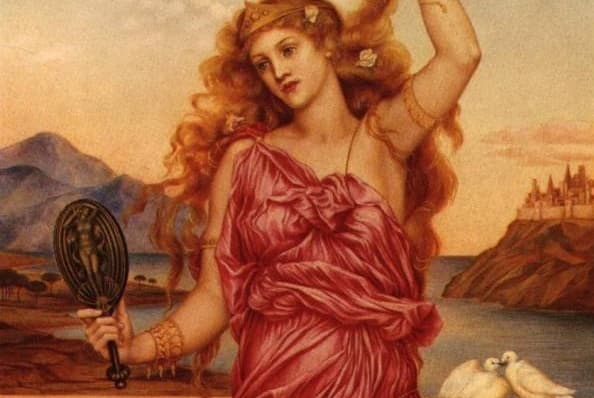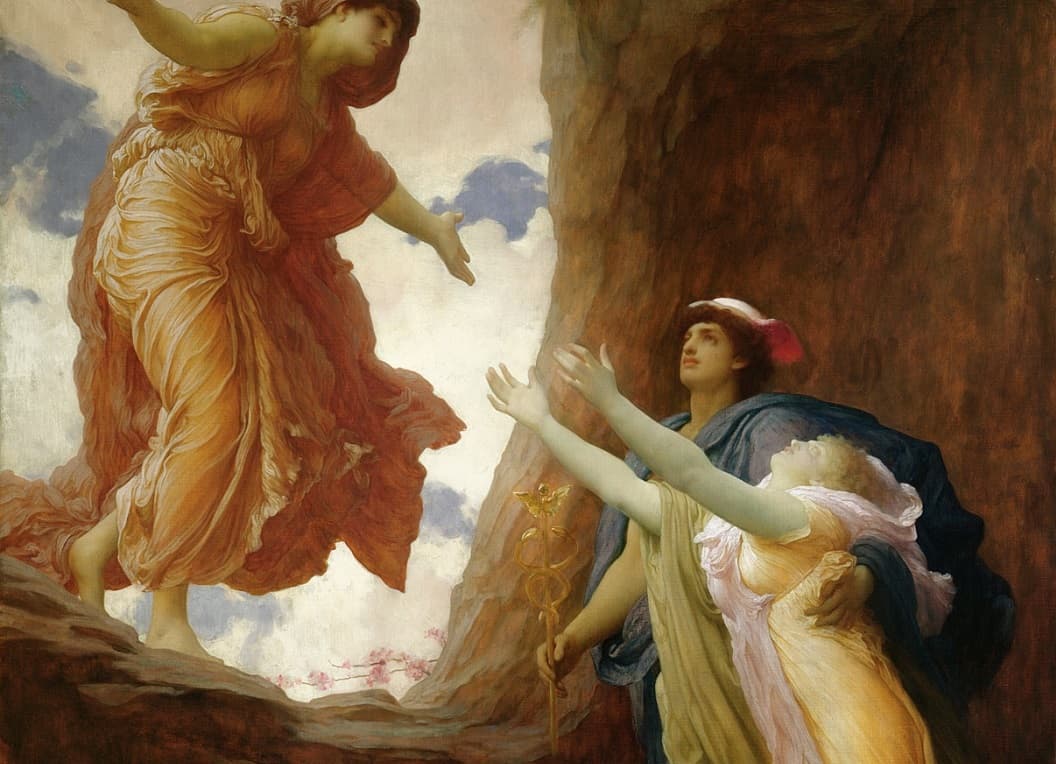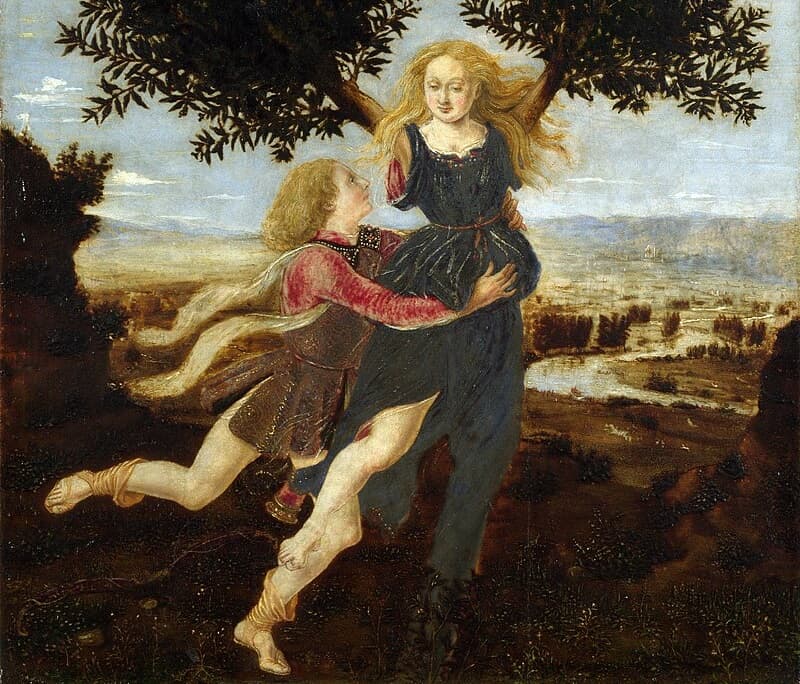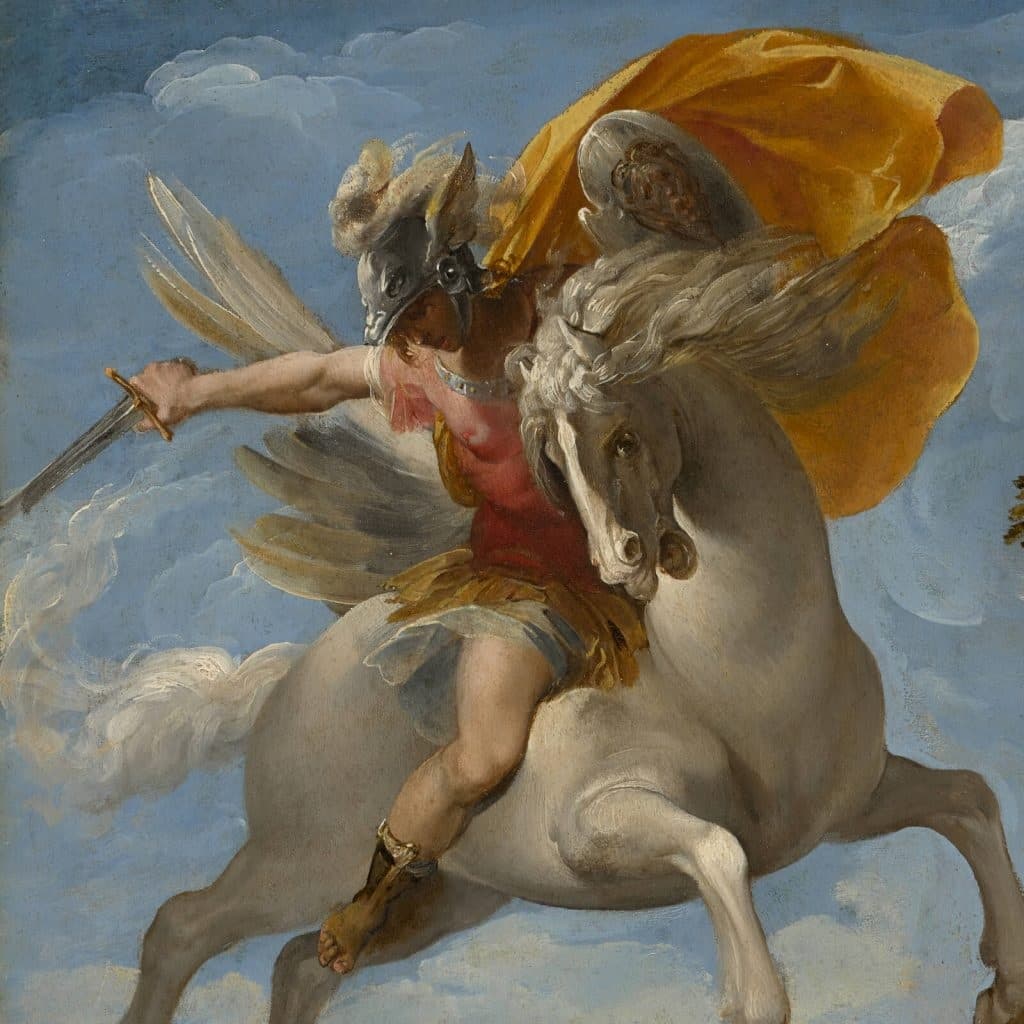Top 5 Greek Mythological Love Stories
Greek mythology brims with tales of love, some tender, some tragic, all immortalized in poetry, art, and modern culture. Here are the five mythical love stories that continue to inspire art, literature, and film.
Orpheus and Eurydice (8th c. BCE / 8 CE)
Image: Oil on canvas, “Orpheus and Eurydice” by Edward Poynter, 1862.The tragic love story of Orpheus and Eurydice is one of the most powerful and enduring myths from ancient Greece. Orpheus was a legendary musician, said to play the lyre so beautifully that even wild animals, trees, and rivers would stop to listen. He was deeply in love with Eurydice, a beautiful nymph. But their happiness was cut short when Eurydice died suddenly, struck by a snake bite on their wedding day, in some versions. Grief-stricken, Orpheus made a daring decision: he would travel to the underworld, the realm of the dead, to bring her back.
No mortal had ever returned from Hades, but Orpheus's music was so moving that it softened even the hearts of the gods of the underworld. Hades and Persephone agreed to let Eurydice go, on one strict condition: Orpheus must not look back at her until they both reached the surface. With hope and dread swirling in his heart, Orpheus began the long journey back, Eurydice silently following behind him in the shadows.
As they neared the exit, just steps away from sunlight and life, doubt overcame Orpheus. Could she really be there? Was it all a cruel trick? He turned to look, and in that instant, Eurydice vanished, pulled back into the underworld forever. His one moment of weakness cost him everything. Alone once more, Orpheus wandered the earth, heartbroken, singing songs of sorrow that echoed through time.
The myth of Orpheus and Eurydice has fascinated artists and storytellers for centuries. It first appeared in early Greek poetry like the Homeric Hymns and was later famously told by the Roman poet Ovid in his Metamorphoses.
Paris and Helen (8th c. BCE)
Image: Oil on canvas, "Helen of Troy" by Evelyn De Morgan, 1898.The story of Paris and Helen is one of the most famous tales from ancient Greek mythology, a mix of love, betrayal, and war that has inspired storytellers for over 2,000 years. It begins when Paris, a young prince of Troy, is asked to judge a beauty contest between three goddesses: Hera, Athena, and Aphrodite. Each offers him a reward, but Paris chooses Aphrodite, who promises him the love of the most beautiful woman in the world. That woman is Helen, queen of Sparta, and already married to King Menelaus.
Paris travels to Sparta, and depending on the version of the myth, either seduces or persuades Helen to leave with him, or she goes willingly, enchanted by Aphrodite's magic. Together, they sail back to Troy, an act considered a grave insult and betrayal. Menelaus, enraged by the loss of his wife, calls on the other Greek kings to honor their oaths and help him retrieve her. This sparks the Trojan War, a brutal conflict that lasts ten years and involves many legendary heroes like Achilles, Hector, and Odysseus.
While Paris and Helen's love is often portrayed as romantic, it comes with devastating consequences. The war they ignite leads to immense suffering, the fall of Troy, and the deaths of thousands. Some ancient authors saw Helen as a helpless pawn of the gods, while others blamed her for starting the war. Her beauty was so legendary that she became known as “the face that launched a thousand ships.” Paris, meanwhile, is often shown as charming but reckless, more concerned with desire than duty.
Their story was first told in Homer's epic poem The Iliad, written in the 8th century BCE, and later explored in ancient Greek plays like those of Euripides. Over the centuries, it's been reimagined in countless ways, from medieval romances to Hollywood films.
Hades and Persephone (8th c. BCE)
Image: “The Return of Persephone” by Frederic Leighton, 1891.The myth of Hades and Persephone is one of the most powerful and enduring stories from ancient Greek mythology. Persephone, the daughter of Demeter, the goddess of agriculture and the harvest, was abducted by Hades, the god of the underworld. He took her to his shadowy realm to be his queen, setting off a chain of events that would explain one of nature's greatest mysteries: the changing seasons.
When Demeter discovered her daughter was missing, her grief was so overwhelming that the earth itself began to suffer. Plants stopped growing, crops withered, and a great famine swept the land. Desperate to restore balance, Zeus, king of the gods, intervened and brokered a compromise. Persephone would spend part of the year with Hades in the underworld and part of it with her mother on Earth. Her time below brought winter, a period of cold and stillness, while her return marked the beginning of spring, when life blooms again.
This myth was first recorded in early Greek works like Hesiod's Theogony in the 8th century BCE, and later in the more detailed “Homeric Hymn to Demeter.” Over the centuries, the tale of Persephone and Hades has inspired countless works of art. Renaissance artists often painted Persephone emerging from the underworld, symbolizing rebirth and transformation. Today, the myth lives on in popular culture, from operas and films to modern retellings like Rick Riordan's Percy Jackson series.
Apollo and Daphne (c. 1 CE)
Image: Oil on panel, “Apollo and Daphne” by Piero del Pollaiuolo, painted between 1470-1480.The story of Apollo and Daphne is another famous myth from ancient Greek mythology. It's one of the “Metamorphoses” myths, where gods and mortals change forms because of divine influence. The full story first appears in the Roman poet Ovid's *Metamorphoses* (around 8 CE). There is no evidence that this myth was popular in early Greek times, so it likely became well-known during the later Hellenistic period.
The story starts after Apollo, the god of the sun, defeats the giant serpent Python. In his pride, Apollo mocks Eros (Roman Cupid), the god of love, for using a bow and arrow. To teach him a lesson, Eros shoots two arrows: one with a golden tip that makes Apollo fall deeply in love with the nymph Daphne, and another with a lead tip that causes Daphne to dislike Apollo. As Apollo chases her through the forest, Daphne, who wants nothing to do with love and marriage, runs away, calling for help from her father, the river god Peneus.
Just as Apollo is about to catch her, Daphne's father answers her call and transforms her into a laurel tree. Her body turns into bark, her hair becomes leaves, and her feet become roots in the ground. Apollo, heartbroken, declares the laurel tree sacred and vows to wear its leaves as a crown. This is how the laurel wreath became a symbol of honor and achievement, which is still used today in art and ceremonies to represent Apollo.
Perseus and Andromeda (8th c. BCE / 1st c. CE)
Image: Oil on a rare blue stone called lapis lazuli, “Perseus Rescuing Andromeda” by Giuseppe Cesari (also known as Cavaliere d'Arpino), c. 1593-1594.The myth of Perseus and Andromeda is one of ancient Greece's most thrilling tales of heroism, danger, and romance. Andromeda, a princess of Ethiopia, was chained to a rock by the sea as punishment for her mother's vanity, Queen Cassiopeia had claimed her daughter was more beautiful than the sea nymphs, angering the god Poseidon. To appease his wrath, Andromeda was offered as a human sacrifice to a sea monster named Cetus.
Enter Perseus, a hero fresh from slaying the Gorgon Medusa, whose gaze could turn anyone to stone. Flying through the skies on winged sandals gifted by the gods, Perseus spotted Andromeda in distress. Moved by her plight, he promised to save her, on the condition that he could marry her. With Medusa's severed head in hand, Perseus confronted Cetus and turned the monster to stone, rescuing Andromeda from certain death.
The two were married shortly after, and their union became legendary. Perseus and Andromeda's descendants were said to include some of the greatest heroes and rulers of Greek mythology, including Heracles (Hercules). In the stars, both Perseus and Andromeda were immortalized as constellations, still visible in the night sky today.
This ancient myth has inspired countless retellings throughout history. It appeared in early Greek literature from writers like Hesiod and Apollodorus, and later influenced medieval tapestries, Renaissance paintings, and modern films. The tale was famously brought to life in the fantasy movies Clash of the Titans (1981 and 2010).
